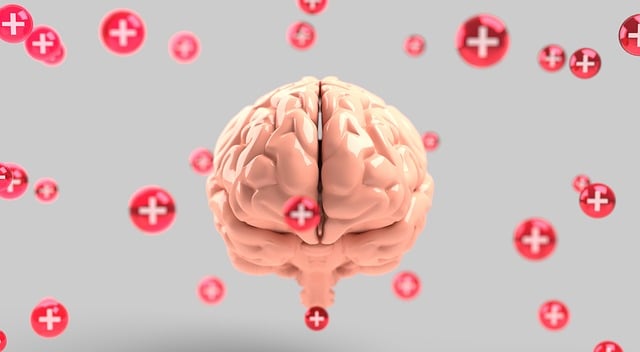Golden Sexual Dysfunction Therapy (GSDT) offers a holistic approach to treating sexual dysfunction, prioritizing risk assessment and cultural sensitivity. Therapists conduct thorough evaluations, implement personalized harm minimization strategies, and provide tailored support through education, support groups, and crisis intervention skills. This comprehensive strategy destigmatizes sexual dysfunction, promotes long-term positive outcomes, boosts self-esteem, and enhances quality of life while fostering a supportive environment. By integrating mood management techniques, stress reduction methods, and trauma support services, GSDT ensures clients can engage deeply in healing without fear of exacerbating challenges.
Risk assessment and harm minimization planning are crucial components of any therapeutic practice, especially when addressing sensitive issues like sexual dysfunction. This article explores these essential concepts through a case study focusing on Golden Sexual Dysfunction Therapy (GSDT). We’ll delve into identifying potential hazards and benefits, developing robust risk management strategies, and the ethical considerations that guide continuous improvement in risk assessment practices within GSDT.
- Understanding Risk Assessment in Therapy: Identifying Potential Hazards and Benefits
- Golden Sexual Dysfunction Therapy: A Case for Harm Minimization Planning
- Developing a Comprehensive Risk Management Strategy
- Ethical Considerations and Continuous Improvement in Risk Assessment Practice
Understanding Risk Assessment in Therapy: Identifying Potential Hazards and Benefits

In the realm of therapy, particularly within the context of Golden Sexual Dysfunction Therapy (GSDT), risk assessment is a cornerstone of safe and effective treatment. It involves meticulously examining potential hazards and benefits associated with various therapeutic interventions. By identifying risks, therapists can proactively implement harm minimization strategies tailored to each client’s unique needs and cultural sensitivities. This proactive approach ensures that the benefits of therapy outweigh any possible adverse effects.
Cultural sensitivity in mental healthcare practice plays a pivotal role in this process. Understanding clients’ backgrounds, beliefs, and values helps therapists adapt their assessment and treatment methods. Additionally, empathy building strategies are instrumental in fostering trust and open communication, which is essential for accurate risk assessment. Public awareness campaigns development can also contribute by educating both clients and therapists about the complexities of sexual dysfunction, breaking down stigma, and promoting early intervention—all of which support safer, more beneficial therapeutic journeys.
Golden Sexual Dysfunction Therapy: A Case for Harm Minimization Planning

The Golden Sexual Dysfunction Therapy (GSDT) approach represents a significant advancement in harm minimization planning for individuals and communities affected by sexual dysfunction. This innovative therapy goes beyond traditional treatments by focusing on holistic healing, emphasizing both physical and psychological well-being. By implementing a Community Outreach Program, GSDT facilitates access to education, support groups, and confidence-boosting initiatives tailored to diverse needs. The program’s success lies in its ability to connect individuals with crisis intervention guidance, empowering them to navigate challenges effectively.
Through this comprehensive strategy, GSDT not only minimizes harm but also promotes long-term positive outcomes. By fostering an environment of understanding and support, the therapy encourages open communication, increases self-esteem, and enhances overall quality of life. This tailored approach is particularly valuable in addressing the often-stigmatized nature of sexual dysfunction, ensuring that those seeking help feel supported and empowered throughout their journey.
Developing a Comprehensive Risk Management Strategy

In the realm of Golden Sexual Dysfunction Therapy (GSDT), developing a comprehensive risk management strategy is paramount to ensure safe and effective treatment. This involves meticulously identifying potential risks associated with the therapeutic process, which can include psychological, emotional, or physical stressors. By employing robust risk assessment tools, therapists can anticipate and mitigate these risks proactively. One key aspect is recognizing that GSDT may trigger past traumas for some individuals; thus, Trauma Support Services should be readily accessible to provide additional support as needed.
A well-structured strategy also incorporates mood management techniques and stress reduction methods as integral components of the treatment plan. This proactive approach not only minimizes potential harm but enhances overall therapeutic outcomes. By integrating these elements, therapists foster a safe and supportive environment, enabling clients to engage deeply in their healing journey without reservations or fear of exacerbating existing challenges. Such comprehensive risk management prepares practitioners to navigate complex emotional landscapes, ensuring that GSDT remains a powerful tool for positive change while prioritizing client well-being.
Ethical Considerations and Continuous Improvement in Risk Assessment Practice

In the realm of risk assessment and harm minimization planning, ethical considerations are paramount. As practices evolve, especially in therapeutic fields like Golden Sexual Dysfunction Therapy, it’s crucial to balance potential risks with the promise of positive outcomes. This delicate navigation requires a commitment to transparency, informed consent, and continuous improvement. By integrating these principles, mental health professionals can ensure their assessments and interventions not only mitigate harm but also enhance patient mental wellness.
The Mental Wellness Podcast Series Production has become a valuable tool for fostering open dialogue about risk assessment, encouraging self-care routine development for better mental health, and promoting positive thinking. This continuous learning approach empowers professionals to adapt their practices, stay abreast of emerging research, and make informed decisions that prioritize patient well-being. Such proactive measures are essential in minimizing risks and maximizing the benefits of therapeutic interventions.
Risk assessment and harm minimization planning are vital components of any therapeutic practice, especially when addressing sensitive issues like sexual dysfunction. As seen with Golden Sexual Dysfunction Therapy, a structured approach can significantly enhance patient outcomes and ensure the safety and well-being of individuals seeking help. By combining thorough risk assessment with ethical considerations, therapists can develop comprehensive strategies that mitigate potential hazards while maximizing benefits. This holistic practice not only promotes positive change but also fosters trust between therapist and client, ultimately revolutionizing the therapeutic landscape for sensitive topics like sexual health.











